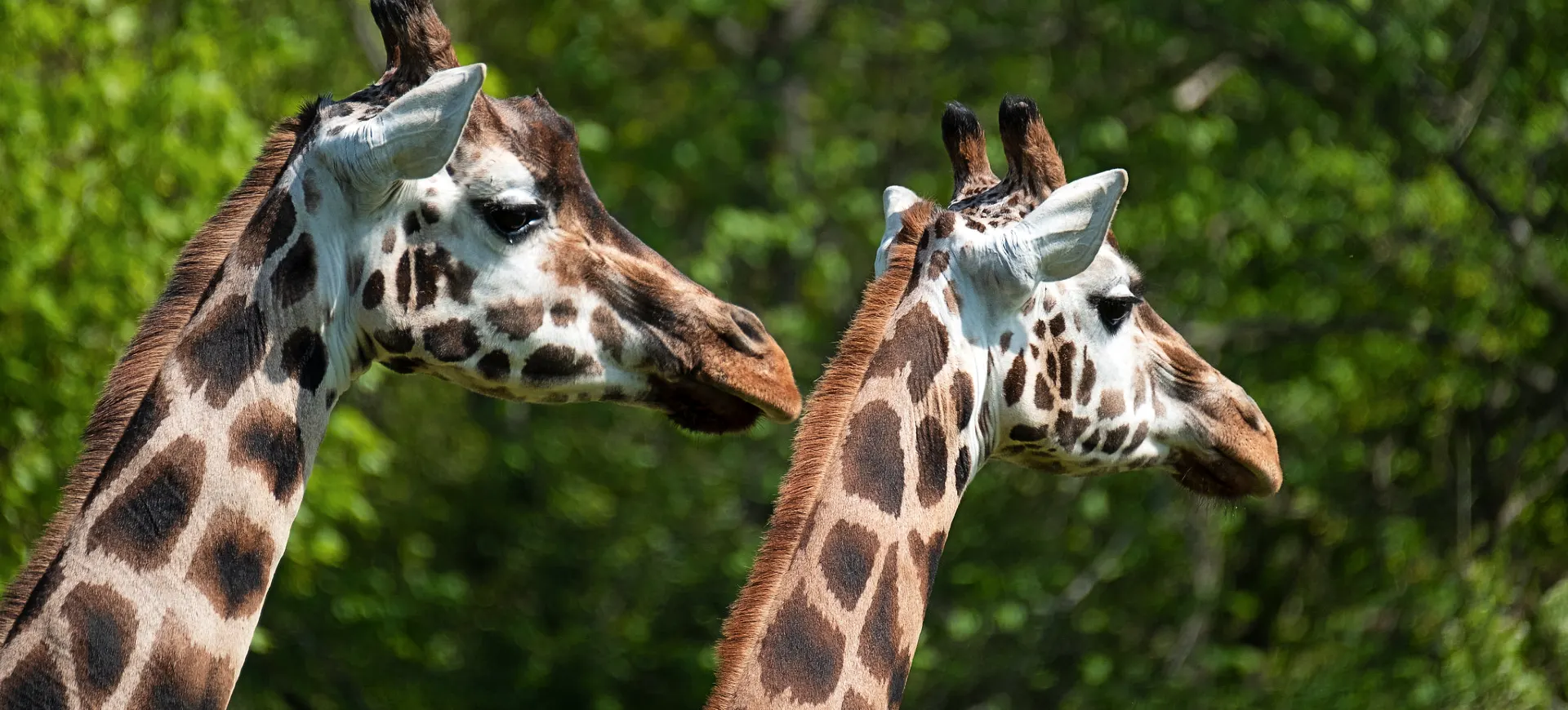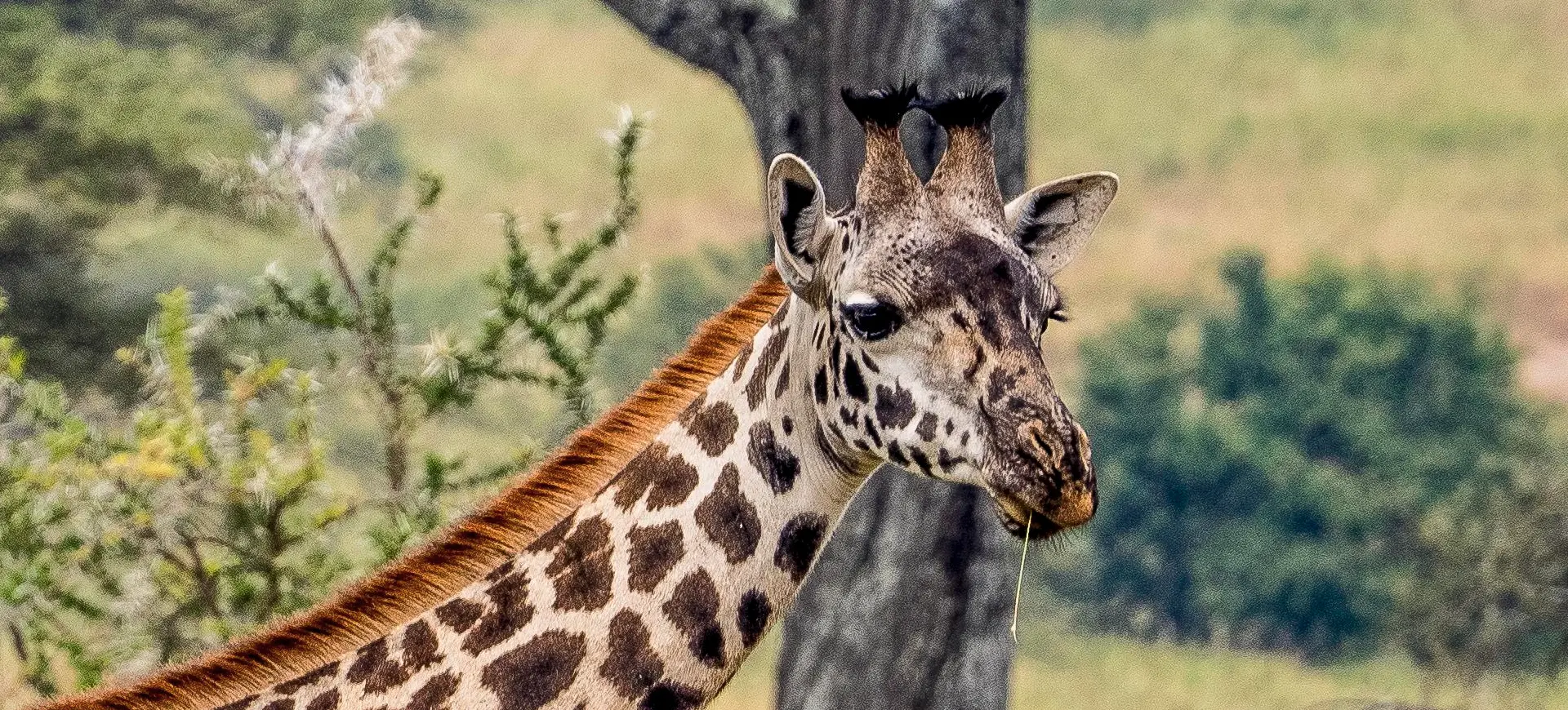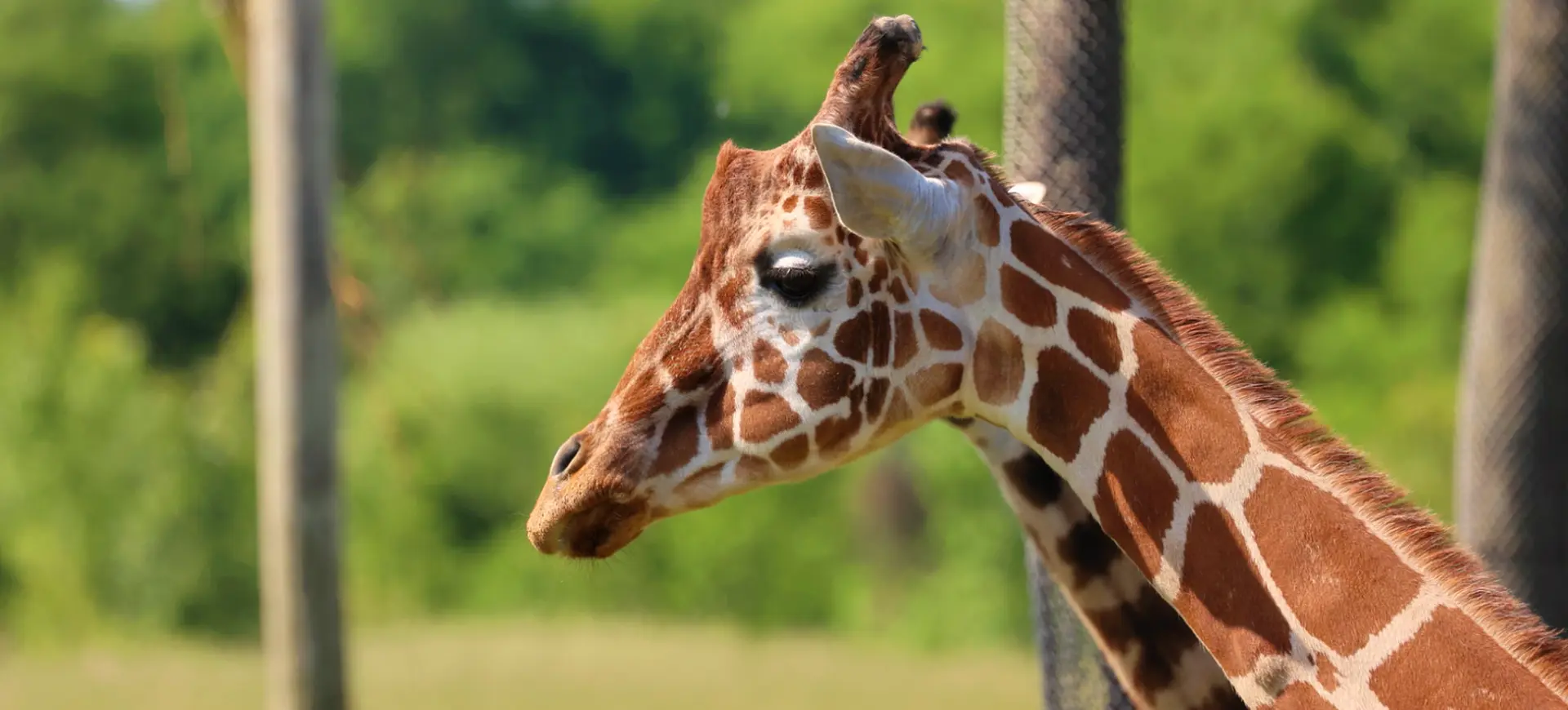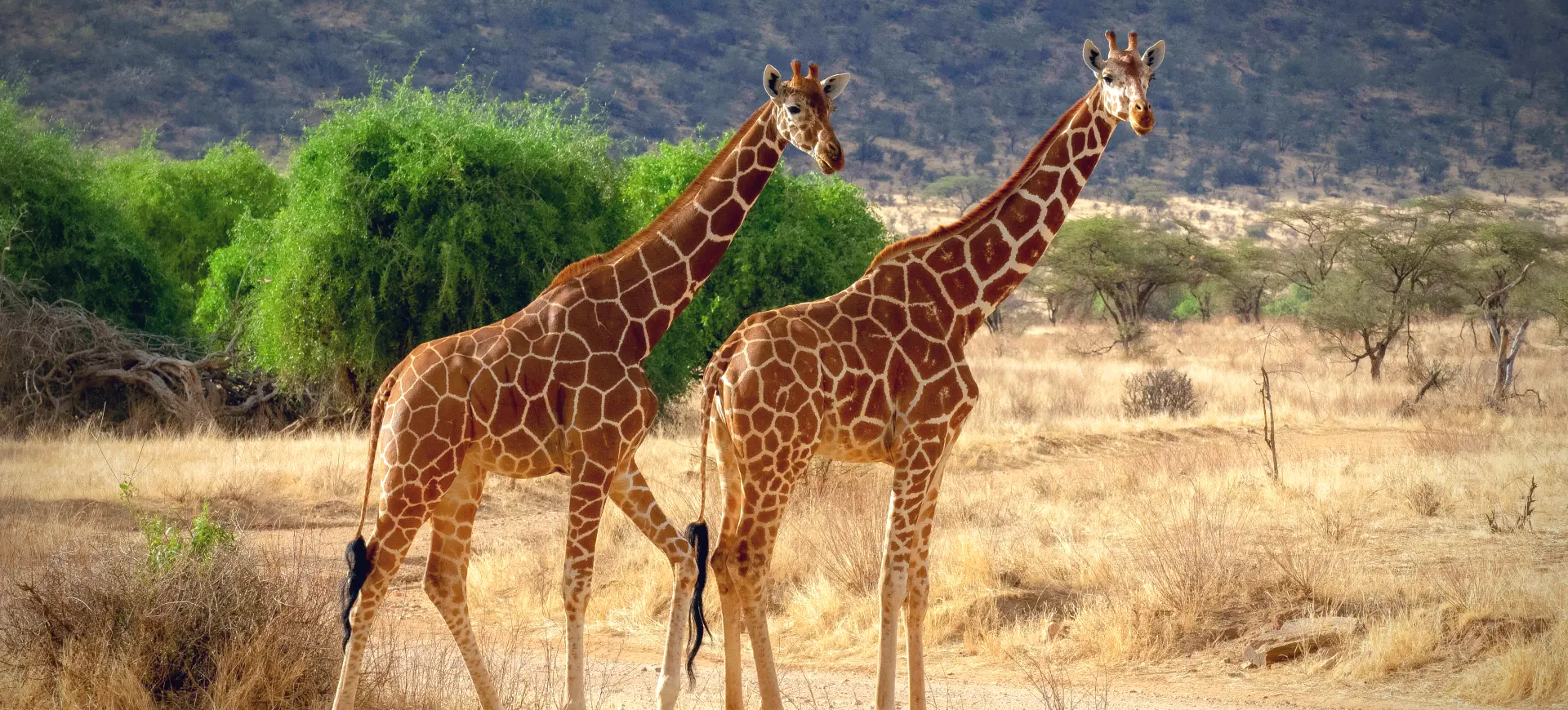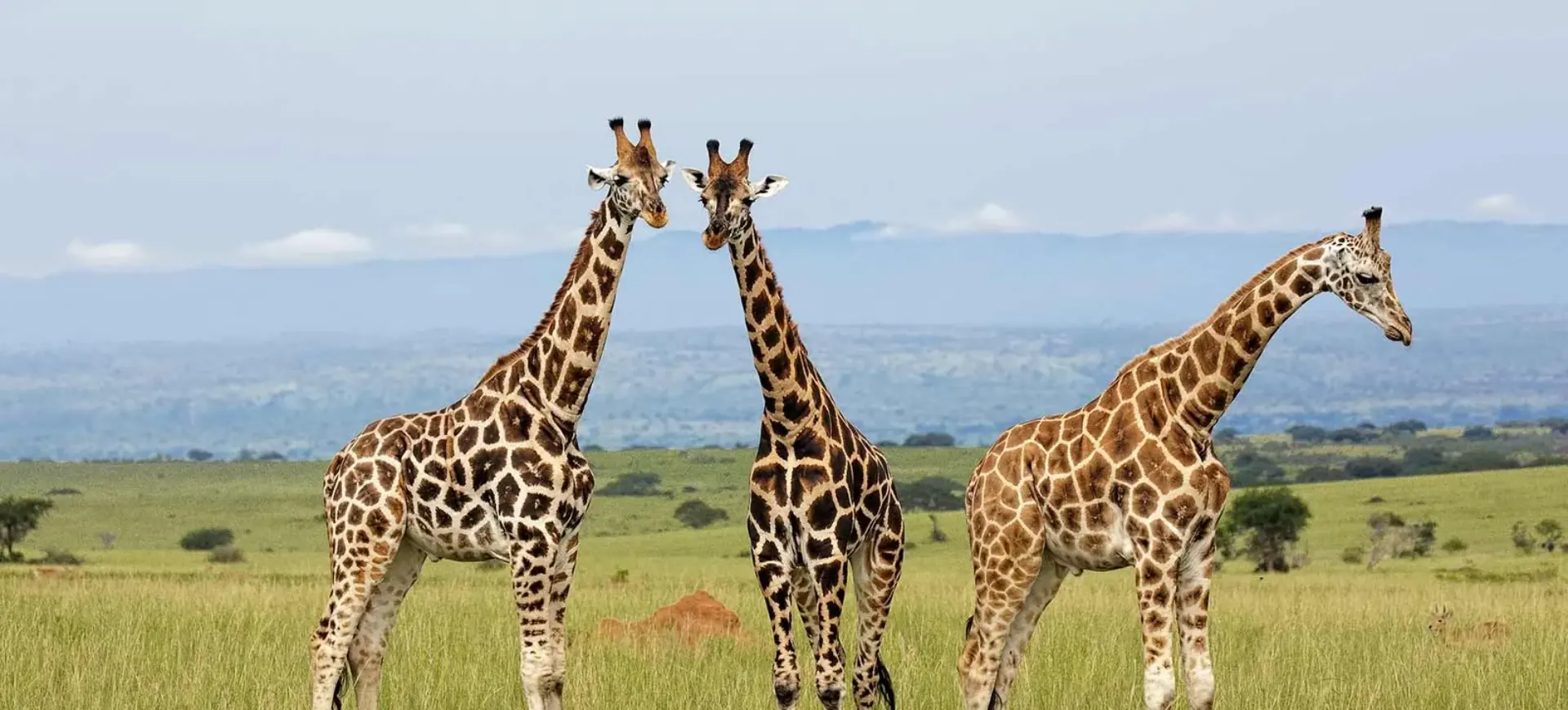Overview
The Okapi (Okapia johnstoni) is a beautiful and elusive mammal that is native to the dense tropical rainforests of Central Africa. Despite bearing striped markings reminiscent of zebras, the Okapi is most closely related to the giraffe. Their bodies are covered with velvety fur ranging from a rich reddish-brown to black, with distinctive striping occurring on their legs and hindquarters. These stripes are thought to aid in camouflage, blending in with their forest habitats’ dappled sunlight and shadows.
Males and females share a similar physical appearance, but one key difference is the small, horn-like structures called ossicones found on males’ heads. The Okapi’s body is characterized by a long, flexible neck, much like a giraffe’s, and large, rounded ears that provide excellent hearing to detect predators in their densely forested habitats. This creature has a relatively small head with a long, prehensile tongue, which they use to strip leaves from branches and even clean their ears.
The Okapi, often called the ‘African Unicorn,’ leads a solitary, secretive life. They have a very low population density and large individual territories, which, combined with their shy behavior and cryptic coloration, makes them incredibly difficult to study in the wild. Due to their elusive nature and the inaccessibility of their rainforest habitats, much of what we know about the Okapi comes from studies of zoo species.
Taxonomy
Kingdom
Phylum
Class
Order
Family
Genus
Species
Type
Physical Description:
An adult Okapi stands about 5 feet at the shoulder and has a body length of about 8 feet. The unique body shape of the Okapi, with its high shoulders and sloping back, is similar to that of the giraffe but on a much smaller scale. Their legs are relatively short for their body size, with the hind legs slightly longer than the front ones. This body structure is particularly suited to moving around in dense forest understories.
Their skin is a reddish dark brown, providing excellent camouflage in the forest, while the horizontal white stripes on their rump and legs break up their outline. The face is generally a lighter gray, with large, flexible ears and a long black tongue reaching up to 14 inches. Males are slightly taller and heavier than females, but the differences are insignificant.

Lifespan: Wild: ~20 Years || Captivity: ~30 Years

Weight: Male: 466-550 lbs (211-250 kg) || Female: 440-530 lbs (200-240 kg)

Length: Male: 7.5-8.2 ft (2.3-2.5 m) || Female: 7.2-7.9 ft (2.2-2.4 m)

Height: Male: 4.9-5.2 ft (1.5-1.6 m) || Female: 4.6-4.9 ft (1.4-1.5 m)

Top Speed: 37 mph (60 km/h)
Characteristic:
Native Habitat:
Okapis inhabit the rainforests of northeastern Democratic Republic of Congo. Their habitats are generally characterized by dense understory vegetation, which they use to hide from potential predators. Their territory includes altitudes of 500 to 1,500 meters.
The okapi’s distribution is influenced by the availability of food plants, as well as the presence of standing water. Okapis need a lot of water in their diet and are never found far from it. Their habitat has a stable high humidity and temperature due to the lack of seasonal variations.
Climate Zones:
Biomes:
WWF Biomes:
Biogeographical Realms:
Continents:
Countries:
Diet:
Diet & Feeding Habits:
Okapis are herbivores with a diet that consists predominantly of tree leaves and buds, grass, ferns, fruits, and fungi. Some of the many plant species okapis eat include the leaves of trees such as the acacia and wild cherry. They use their long, prehensile tongue to reach vegetation and groom themselves and their offspring.
Despite being ruminants, okapis have a relatively high rate of food passage for their size, allowing them to exist on leaves with a higher fiber level than many other herbivores. They have been known to consume charcoal from trees struck by lightning, an odd behavior thought to be a means of getting minerals not present in their high-fiber diet.
Mating Behavior:
Mating Description:
Okapis are solitary animals that come together only to breed. Female okapis will signal their readiness to mate through scent marking, and males will seek out these females by following their scent trails. Once the male has found a receptive female, he will stay with her for several days to mate before returning to his solitary lifestyle.
The okapi’s gestation period is remarkably long, typically around 14-16 months, after which the female gives birth to a single calf. Calves can usually stand within 30 minutes of birth, which is crucial for survival in the Ituri rainforest’s predator-rich environment.
Reproduction Season:
Birth Type:
Pregnancy Duration:
Female Name:
Male Name:
Baby Name:
Social Structure Description:
Okapis are mostly solitary animals, with males and females only coming together for mating. They are not territorial, but each individual requires a large forest area to provide sufficient food. Adult males live alone, while females are sometimes seen with their offspring.
The Okapi has a unique method of communication involving infrasound—a sound that is too low for humans to hear. This allows them to communicate over long distances in their dense forest habitats without attracting the attention of predators.
Groups:
Conservation Status:
Population Trend:
The Okapi is an elusive species that is difficult to monitor in the wild due to its secretive nature and the dense rainforest habitat it inhabits. The best estimates suggest between 10,000 and 20,000 Okapis are left in the wild, all within the Democratic Republic of Congo (DRC).
The Okapi population is declining due to a range of threats, mainly habitat destruction and hunting. Habitat loss is caused by logging and human settlement, while hunting is for meat and parts used in traditional medicine. The ongoing conflict in the DRC has also disrupted conservation efforts and increased poaching.
Population Threats:
The primary threats to Okapis include habitat loss due to deforestation from illegal mining, logging, and settlement. This habitat loss not only results in the loss of homes for Okapis but also divides their population into small, isolated groups, making breeding more difficult.
Another major threat is hunting, both for bushmeat and for parts used in traditional medicine. Okapis are also inadvertently caught in snares set for other animals. Additionally, the ongoing conflict in the region has made conservation efforts extremely challenging and has increased poaching.
Conservation Efforts:
Conservation efforts for the Okapi are primarily centered around the Okapi Wildlife Reserve in the DRC, which was established in 1992 and covers about one-fifth of the Ituri Rainforest. The reserve provides a protected area where hunting is restricted, and habitat loss from logging and settlement is limited.
In addition to protecting the Okapi’s habitat, conservation efforts also include educating local communities about the importance of the Okapi and the need for its conservation. Zoos worldwide participate in captive breeding programs, contributing to the knowledge about the Okapi’s behavior, reproduction, and dietary needs, which aids in their conservation in the wild.
Additional Resources:
Fun Facts
- The okapi is the only known living relative of the giraffe.
- Okapis have long tongues that can reach up to 14 inches in length.
- Despite their size, okapis are excellent jumpers and fast runners, with a top speed of up to 37 mph (60 km/h).
- The unique striped markings on an okapi’s legs and hindquarters are thought to help young follow their mothers through the dense rainforest.
- Okapis are sometimes called the “African unicorn” due to their elusive nature.
- Male okapis have horn-like bumps called ossicones on their head, similar to giraffes.
- Okapis have large ears, which provide them with excellent hearing to detect predators.
- The gestation period of an okapi is about 14-16 months, one of the longest of any ruminant.
- Okapis communicate using infrasounds—sounds too low for humans to hear.
- Okapis are fully protected by law in the Democratic Republic of the Congo.





